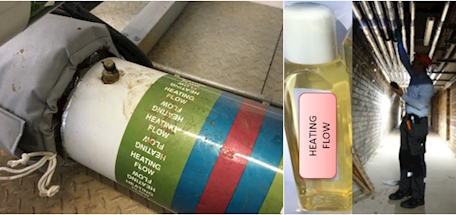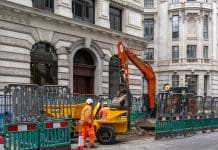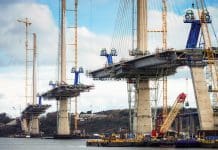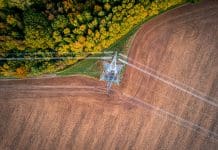Martin Ronceray, BSRIA engineering investigations lead, discusses the importance of planning for water safety in buildings and workplaces
Water systems are present in almost every building. These typically include domestic water systems (which provide potable hot and cold water) and central heating systems. Some buildings also have chilled water systems to provide space cooling.
Central heating and chilled water systems are often referred to as closed loop systems. Some buildings also have decorative water features such as fountains and industrial features such as vehicle washing facilities, landscape watering, and leisure facilities such as pools and spas.
Additionally, water systems may be installed or brought into the building by users, for example drinking water dispensers and humidifiers.
Owners and operators of such buildings should have a plan to ensure all these water systems are safe for the users, including visitors, employees and contractors.
A new code of practice for a holistic approach to water safety
In 2011, the World Health Organization (WHO) published guidance specific to water safety in buildings with the adoption of water safety planning: Water Safety in Buildings.
The WHO recommends three components in the development of a water safety plan:
- System assessment to determine whether the provider as a whole can deliver water of a sufficient quality
- Monitoring of the control measures in the supply chain that are of particular importance in securing water safety
- Management plans describing the actions to be undertaken from normal conditions to extreme events and how they will be communicated to the various stakeholders.
All these were integrated into a new British Standard published in May, BS 8680:2020 Water quality. Water safety plans. Code of practice.
This new code of practice follows the above WHO guidance document and integrates some specificities encountered in the UK legislation and regulations, and therefore goes beyond the simple legionella risk assessment encountered in most buildings and workplaces. It looks at all water systems, assessing their risk, monitoring the identified mitigation measures for these risks and the implementation of an adequate management scheme. This is all wrapped up into a Water Safety Plan (WSP) supported by a Water Safety Group (WSG).
It holistically covers the entire life span of a building from its conception and design up to its alteration or decommissioning.
Water Safety Plan (WSP) and Water Safety Group (WSG) – Garbage in, Garbage out?
A water safety plan can be developed by carrying out three key steps:
- Assessing the water systems – What systems are present? Where are they? Who uses them?
- Monitoring the control measures – How to monitor? When to inspect?
- Managing with adequate communication – Who is responsible? What decisions are made?
To sustain this plan would require suitable people to be involved during these various steps and they would form part of the water safety group. Some people may take part permanently due to their level of responsibility associated with the water systems (for example the building owner) and some may take part only occasionally (for example external consultants or water experts).
Too often at BSRIA we investigate water system failures that could have been prevented or their catastrophic consequences mitigated by an adequate WSP supporting by a WSG.
Failures are often encountered in a building during the first couple of years of operation. The operation team or building owner blames the design and construction team for the failures, and the design and construction team blames the operator or owner for not having correctly run and maintained the systems in their early life. Clearly, all these parties should take part in the WSG and work together in producing a realistic WSP, otherwise it is a recipe for disaster!
One element the BS 8680 code of practice recommends for improving collaboration between various parties and stakeholders is the use of a Soft Landings approach. The BSRIA Soft Landings Framework can be found in the guidance document BG 54/2018 which is free to download to all members on the BSRIA website. This approach will assist project teams, clients and building owners in the development of a WSP, identification of persons to include in a WSG and emphasises the importance of a planned handover when the building is completed.
Another element the BS 8680 code of practice stresses in the development of a successful WSP is to focus not solely on drinking water quality but also on the overall safety of other water systems in a building. For instance, a lack of heating in a public place may result in visitors unable to attend during the winter period with the reputation damage, or a lack of cooling may be critical to industrial units with the consequences on their safe operation. Both examples ultimately have a financial consequence on the business activity either directly (the industrial unit having to stop) or indirectly (the public not visiting shops/retailers).
Goal, plan, success
As with any plan, if it is not correctly prepared by competent people, it is likely to fail, possibly with severe consequences.
This is why it is important to have a trail to follow and also to have suitable guidance to help avoid pitfalls.
Therefore, it is essential to first define what is to be achieved by having a water safety plan: Is it a business objective? A compliance requirement? A strategic positioning on the market?
The next step would be to develop the plan, involving the relevant people by following the key steps of the code of practice.
Finally, the success of the WSP should be regularly evaluated, members of the WSG should be rewarded for their effort, and to the whole process should be reviewed for improvements.
In simple terms: following the success criteria process defined in BG 74/2019 Success Criteria for Soft Landings Projects.
BSRIA – your independent expert in water systems
BSRIA has been in the building services industry for over 60 years and has been involved in numerous of guidance documents and standards on water systems in buildings covering their design, construction, commissioning, operation and maintenance.
Our independence makes us the ideal partner to provide an authoritative assessment of the water systems in your building including water sampling, criticality to your business activity, condition using non-intrusive methods like ultrasonic thickness surveys, and life expectancy while maintaining safe operation.
BSRIA’s expert support provides direction to any business or organisation, however large or small on a strategic plan to manage risks from water to prevent harm from all types of exposure in the form of a water safety plan.
The BSRIA investigation team can be contacted at +44 (0) 1344 465578, or investigations@bsria.co.uk










![[VIDEO] UK-based firm reveals ‘world’s first’ fully AI-driven architectural project Studio Tim Fu has revealed the 'world's first' fully AI-driven architectural project in Slovenia, developing six luxury villas on the Lake Bled Estate](https://www.pbctoday.co.uk/news/wp-content/uploads/2025/03/Interior-1-studio-tim-fu-218x150.gif)




